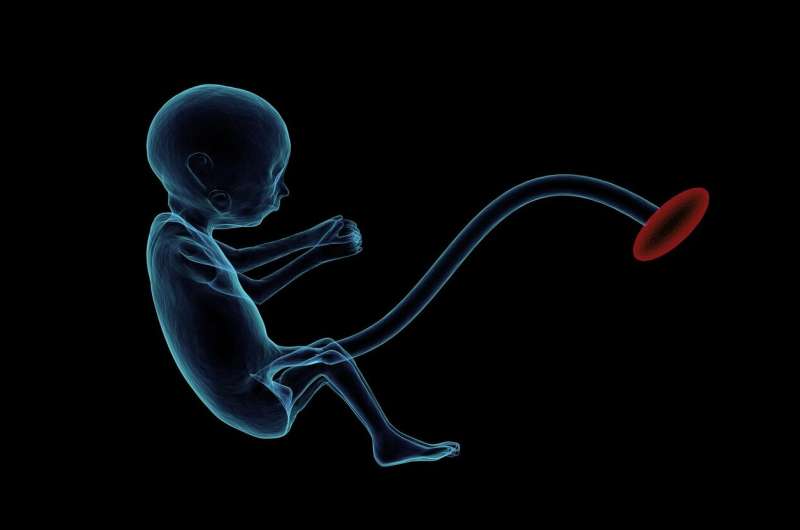This article has been reviewed according to Science X's editorial process and policies. Editors have highlighted the following attributes while ensuring the content's credibility:
fact-checked
peer-reviewed publication
trusted source
proofread
Prenatal exposure to lead linked to lower birth weights, earlier births in gold mining communities

A new study on the impacts of prenatal exposure to toxic metals linked to artisanal gold mining and other sources in Madre de Dios, Peru, finds that mercury—the metal most commonly linked to adverse health impacts in the region's general population—has no direct effect on a newborn's birth weight or gestational age.
It's a different story, though, for lead, which may also be released by mining operations but more likely is consumed when people eat wild game that inadvertently still contains small bullet fragments.
Exposure to lead was strongly linked to lower birth weights and earlier births and was found to be more prevalent than the researchers expected.
"We were really surprised that the effect of lead was so prominent. The good news is that our analysis shows that if women can get prenatal health care, it significantly reduces the harmful impacts of their exposures," said William Pan, associate professor of global environmental health at Duke University, who was senior author of the study.
"This finding underscores the importance of making prenatal health care accessible to expectant mothers in Madre de Dios and other mining communities worldwide," said Axel Berky, senior staff professional at Geosyntec Consultants and lead author of the study. "It also highlights the need for paying increased attention to the health risks posed to children from lead exposures, which are still a problem in these communities," he said.
Pan holds the Elizabeth Brooks Reid and Whitelaw Reid chair in population studies at Duke's Nicholas School of the Environment and the Duke Global Health Institute (DGHI). Berky earned his Ph.D. from the Nicholas School in 2022 and his Master of Environmental Management there in 2014.
They and their co-authors published their findings Sept. 25 in Environmental Health Perspectives.
To conduct their study, they analyzed maternal and cord blood samples, collected at the time of childbirth, from 198 new mothers who had been enrolled since at least the start of their third trimester of pregnancy in the Cohorte de Nacimiento de Madre de Dios neonatal health screening study.
The samples were analyzed for concentrations of calcium, iron, selenium, zinc, magnesium, mercury, lead, and arsenic to assess how exposure to toxic metals affected birth weight and gestational age, and whether access to prenatal medical care mitigated the risks.
Using structural equation models—a statistical technique that enables researchers to assess causal relationships among multiple variables, both observed and latent—allowed the Duke-led team to tease apart and quantify the impact of each variable without losing sight of the cumulative impact of their interactions. "Taking this approach allowed us to identify causal relationships that could have been masked or distorted otherwise," Berky said.
Among other findings, the study shows that even a 1% increase in lead levels in a mother's blood can shorten a fetus' gestational period by 3.6 days and lower its birth weight by 76.5 grams.
Conversely, increasing a mother's number of prenatal health care visits from six to 12 can add 5.5 days to the newborn's gestational age and 319 grams to its birth weight.
"This is probably because women who go to these visits get advice on how to have a healthy lifestyle, and this enables them to provide better nutrition for the child and reduce the amount of impact a chemical or metal exposure will have," Pan said. "But we need to do larger studies to know for sure."
One inference that should not be drawn from the new findings is that prenatal mercury exposure poses no risks, he added. Even though it appears to have no direct measurable effects on birth weight or gestational age, it's a potent neurotoxin with impacts that likely will become more apparent over time.
More information: Axel J. Berky et al, In Utero Exposure to Metals and Birth Outcomes in an Artisanal and Small-Scale Gold Mining Birth Cohort in Madre de Dios, Peru, Environmental Health Perspectives (2023). DOI: 10.1289/EHP10557





















